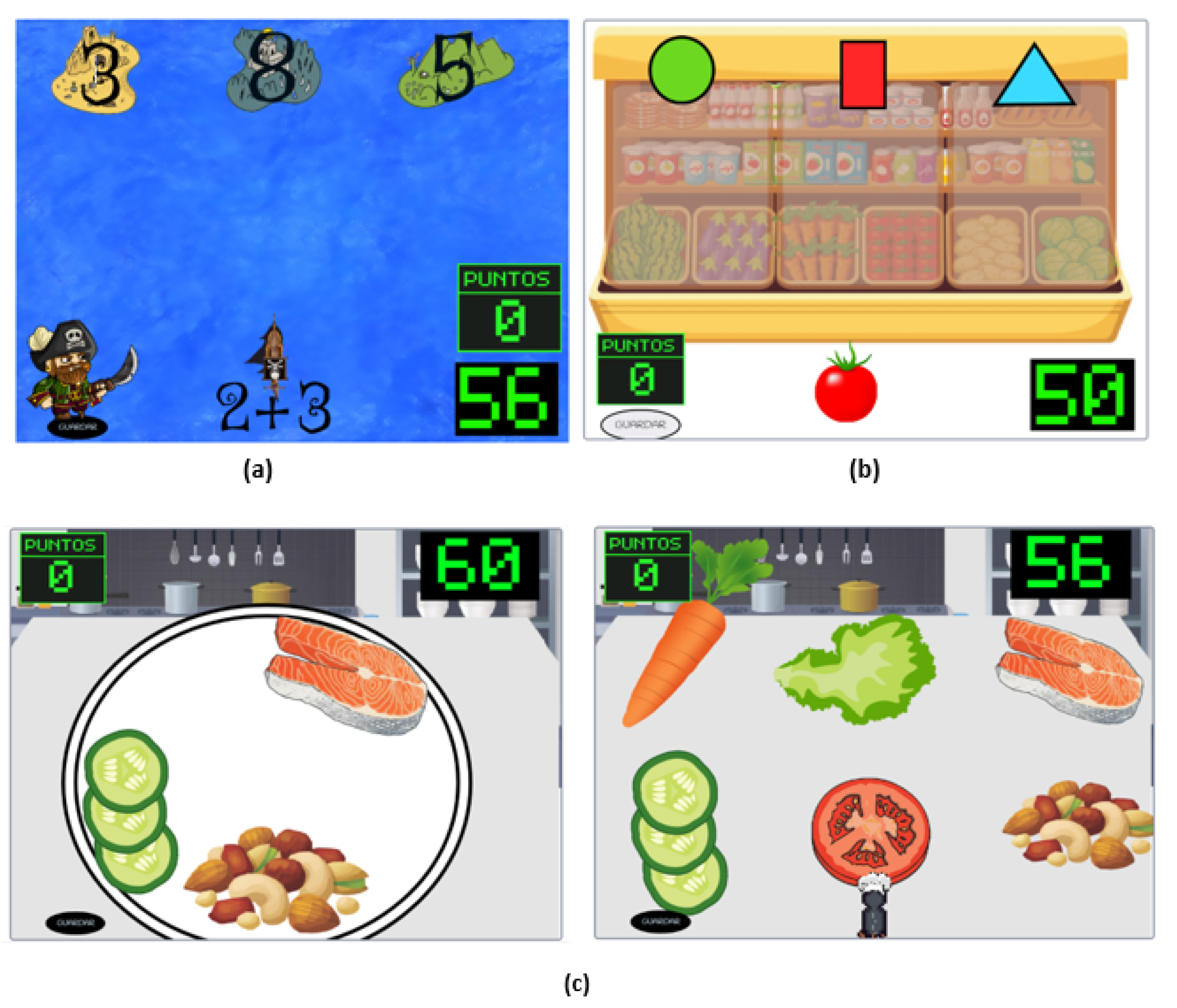Development of Dual Activities with Micro:Bit for Interventions in People with Cerebral Palsy †
Abstract
:1. Introduction
2. Materials and Methods
- Maths. The aim is to solve addition and subtraction problems.
- Memory. The user must memorize a pattern of objects.
- Shape matching. Different objects are shown and the user must match them with their shape.
3. Future Work
Author Contributions
Funding
Institutional Review Board Statement
Informed Consent Statement
Conflicts of Interest
References
- Bax, M.; Goldstein, M.; Rosenbaum, P.; Leviton, A.; Paneth, N.; Dan, B.; Jacobsson, B.; Damiano, D. Executive Committee for the Definition of Cerebral Palsy. Proposed definition and classification of cerebral palsy, April 2005. Dev. Med. Child Neurol. 2005, 47, 571–576. [Google Scholar] [CrossRef] [PubMed]
- Cano-de la Cuerda, R.; Muñoz-Hellín, E.; Alguacil-Diego, I.M.; Molina-Rueda, F. Telerrehabilitación y neurología. Rev. Neurol. 2010, 51, 49–56. [Google Scholar] [CrossRef] [PubMed]
- Susi, T.; Johannesson, M.; Backlund, P. Serious Games: An Overview; Technical Report HS- IKI -TR-07-001; School of Humanities and Informatics University of Skövde: Skövde, Sweden, 2007. [Google Scholar]
- Rego, P.; Moreira, P.M.; Reis, L.P. Serious games for rehabilitation: A survey and a classification towards a taxonomy. In Proceedings of the 5th Iberian Conference on Information Systems and Technologies, Santiago de Compostela, Spain, 16–19 June 2010; pp. 1–6. [Google Scholar]
- Microes.org. Qué es micro:bit—Microes.org—Comunidad micro:bit en España. 2021. Available online: http://microes.org/que-es-microbit.php (accessed on 20 July 2021).

Publisher’s Note: MDPI stays neutral with regard to jurisdictional claims in published maps and institutional affiliations. |
© 2021 by the authors. Licensee MDPI, Basel, Switzerland. This article is an open access article distributed under the terms and conditions of the Creative Commons Attribution (CC BY) license (https://creativecommons.org/licenses/by/4.0/).
Share and Cite
Molinero-Rodríguez, A.; Carneiro-Medín, R.; Miranda-Duro, C.; Nieto-Riveiro, L.; Castro, P.M.; Dapena, A. Development of Dual Activities with Micro:Bit for Interventions in People with Cerebral Palsy. Eng. Proc. 2021, 7, 21. https://doi.org/10.3390/engproc2021007021
Molinero-Rodríguez A, Carneiro-Medín R, Miranda-Duro C, Nieto-Riveiro L, Castro PM, Dapena A. Development of Dual Activities with Micro:Bit for Interventions in People with Cerebral Palsy. Engineering Proceedings. 2021; 7(1):21. https://doi.org/10.3390/engproc2021007021
Chicago/Turabian StyleMolinero-Rodríguez, Ainhoa, Rubén Carneiro-Medín, Carmen Miranda-Duro, Laura Nieto-Riveiro, Paula M. Castro, and Adriana Dapena. 2021. "Development of Dual Activities with Micro:Bit for Interventions in People with Cerebral Palsy" Engineering Proceedings 7, no. 1: 21. https://doi.org/10.3390/engproc2021007021
APA StyleMolinero-Rodríguez, A., Carneiro-Medín, R., Miranda-Duro, C., Nieto-Riveiro, L., Castro, P. M., & Dapena, A. (2021). Development of Dual Activities with Micro:Bit for Interventions in People with Cerebral Palsy. Engineering Proceedings, 7(1), 21. https://doi.org/10.3390/engproc2021007021







